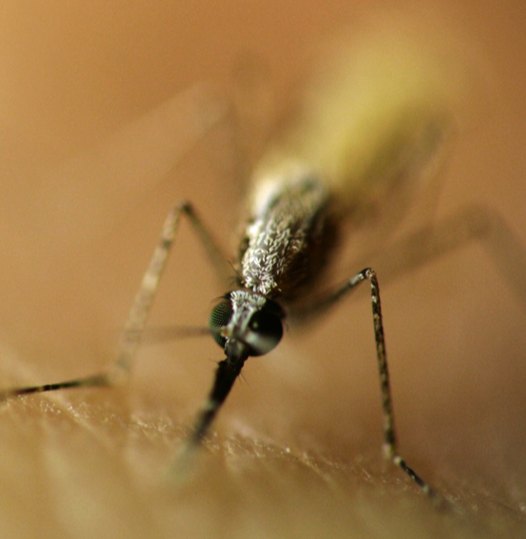
[ad_1]
![A mosquito that sucks the blood of a person. This process causes the malaria parasite to penetrate the skin. [사진 하이델베르크대]](https://pds.joins.com//news/component/htmlphoto_mmdata/201807/24/7b5f027d-40d4-47b0-84a1-9ad09d2e6f00.jpg)
A mosquito that sucks the blood of a person. This process causes the malaria parasite to penetrate the skin. [사진 하이델베르크대]
Diseases that cause more than two million patients each year and cause more than 400,000 deaths. It is malaria.
The World Health Organization (WHO) considers malaria as the most prevalent infectious disease in the world. According to the World Health Organization (WHO), the number of malaria patients worldwide in 2015 was 2.14 million. Of these, 438,000 died. Although 88% of cases occurred in Africa, malaria infections are increasing in Southeast Asia.
Malaria is transmitted by females of the Anopheles species. When the mosquito sucks human blood, it enters the plasmodium of the skin, which infects malaria. It takes a few weeks and weeks until infectious symptoms such as chills and fever appear after biting a mosquito. The malaria parasite, which is captured in the liver, destroys red blood cells.
![Magnification of a malaria parasite with the help of a microscope. [사진 하이델베르크대]](https://pds.joins.com//news/component/htmlphoto_mmdata/201807/24/fdbcb8a9-db0a-4335-9389-dcdd708406ec.jpg)
Magnification of malaria parasites under a microscope. [사진 하이델베르크대]
Malaria is a global problem. The Bill & Merlin Gates Foundation, founded by American founder Bill Gates, has been working on the development of antimalarial drugs since 2000, but it is far from malaria. Last year, Bill Gates donated 64 million shares of Microsoft to the Bill & Melinda Gates Foundation. That's $ 4.6 billion (5.20 trillion won).
How can we explain why there are many deaths from malaria infections? Scientists are also involved in a variety of related research.
A team from the University of Heidelberg in Germany recently published a new study that may explain the high prevalence of malaria. The malaria parasite that enters the skin through mosquitoes is 10 times faster than the immune system of the human body. Researchers at the University of Heidelberg have discovered that the malaria parasite can move rapidly from actin proteins involved in the production of muscle cells. The actin of malaria, which we examined with the help of a microscope, had a long shape like a rope like a pile of lego. Actin is also present in the human body, which malaria has developed in its own way.
![Structure of the parasite of malaria moving through the skin (left) and the structure of the protein used by protozoa in this process (right). It's similar to the protein in the human body. [사진 하이델베르크대]](https://pds.joins.com//news/component/htmlphoto_mmdata/201807/24/06e4118c-b517-434c-b777-ffd8b5fd4aba.jpg)
Structure of the parasite of malaria moving through the skin (left) and the structure of the protein used by protozoa in this process (right). It's similar to the protein in the human body. [사진 하이델베르크대]
"Malaria protozoa move ten times faster than white blood cells in the body," said Dr. Ross Douglas. "Malaria spreads quickly because it easily bypbades the last barrier, the immune system."
The research team went a step further here. Experiments have changed the Maltese actin into mammalian actin. Then the malaria parasite could not move at a fast pace. "When we replaced the malaria proteins with mammalian proteins, some did not survive and some had trouble moving," said Dr. Ross Douglas.
![Structure of the actin of malaria. This is similar to the construction of Lego. [사진 하이델베르크대]](https://pds.joins.com//news/component/htmlphoto_mmdata/201807/24/70335e2a-1d79-4c57-aba8-a29c39789b6f.jpg)
Structure of the actin of malaria. This is similar to the construction of Lego. [사진 하이델베르크대]
This means that the malaria parasite has evolved to speed up the immune system of mammals. The results were published in the international journal Ploss Biology.
The University of Heidelberg predicts that the results will spread to the development of antimalarial drugs and to other studies on parasites. Dr. Douglas plans to conduct further research on the process of forming actin from malaria using a supercomputer.
The function f (b, e, v, n, t, s)
if (f.fbq) returns; n = f.fbq = function () {n.callMethod? n.callMethod.apply (n, arguments): n.queue.push (arguments)}; if (! f._fbq) f._fbq = n;
n.push = n; n.loaded =! 0; n.version = 2.0 & # 39 ;; n.queue = []; t = b.createElement (e); t.async =! 0;
t.src = v; s = b.getElementsByTagName (e) [0]; s.parentNode.insertBefore (t, s)
} (window, document, script, // connect.facebook.net/en_US/fbevents.js');
fbq (& # 39 ;, & # 39; 712739455529100 & # 39;);
fbq (& # 39; track & # 39 ;, "PageView");
[ad_2]
Source link